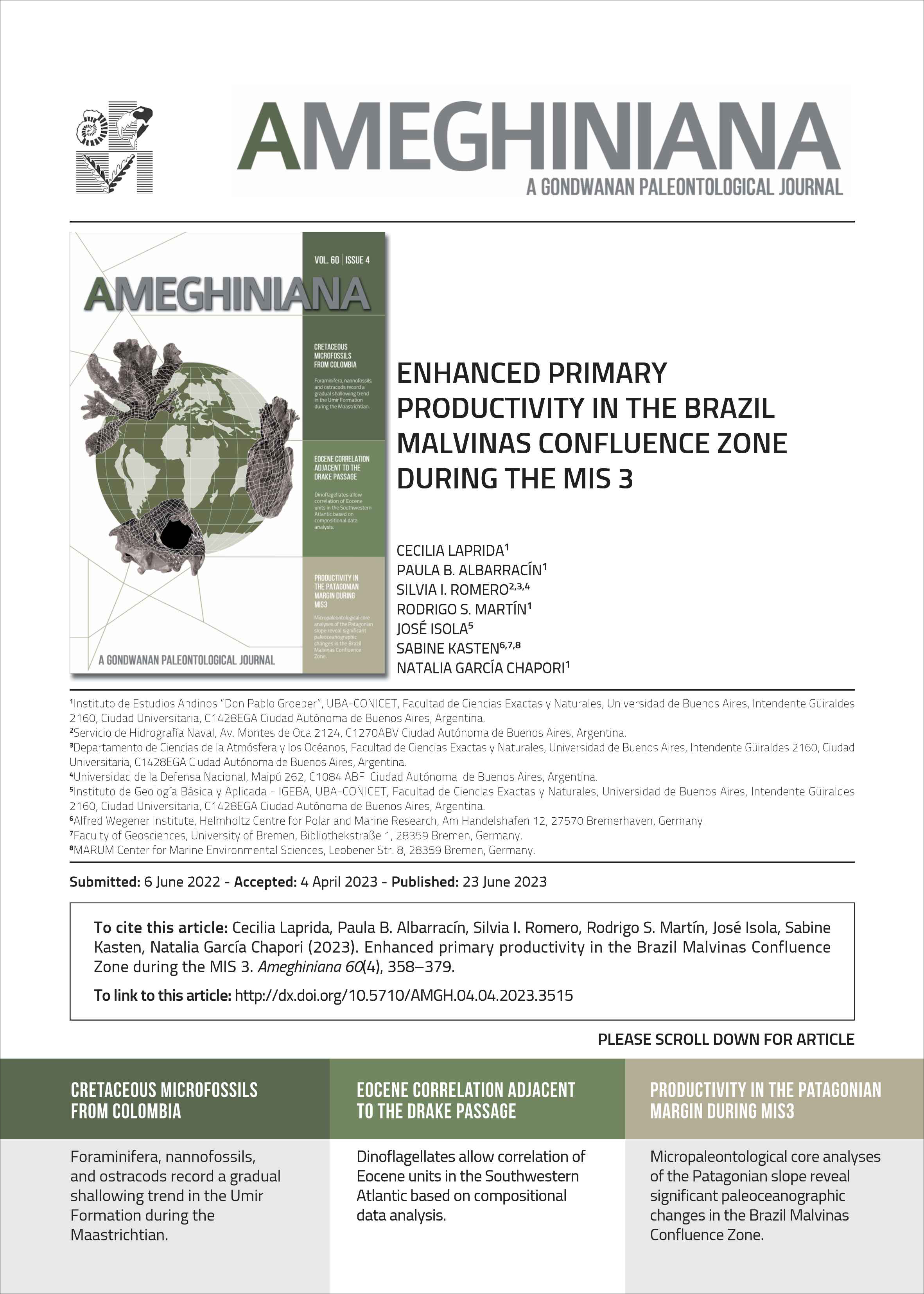ENHANCED PRIMARY PRODUCTIVITY IN THE BRAZIL MALVINAS CONFLUENCE ZONE DURING THE MIS 3
DOI:
https://doi.org/10.5710/AMGH.04.04.2023.3515Keywords:
Paleoceanography, Patagonian Continental Margin, MIS 3, Foraminifera, Primary Productivity, Brazil Malvinas ConfluenceAbstract
Micropaleontological analyses from the western South Atlantic core AU_Geo02_GC20 (45° 55’ S; 58° 30’ W, 2589 m water depth) revealed changes in the primary productivity and sea surface temperature (SST) during MIS 3 that point to significant changes in the Brazil Malvinas Confluence Zone dynamics. These changes led to a marked increase in the SST and the primary productivity between 44.0–36.1 ka BP, as indicated by the quantitative reconstruction of the subsurface temperature and the high relative abundance of the planktonic foraminifera Globigerina bulloides and the eutrophic index. The increase in the SST and the primary productivity could indicate frequent or more persistent southward penetration of subtropical waters over the north Patagonian margin due to a southward extension of the Brazil Current and a weakening of the Malvinas Current. The high primary productivity resulted in the intensive use of phosphate during spring. Conversely, benthic assemblages do not reflect high surface productivity. The dominance of calcareous nannoplankton over diatoms as primary producers, which allows inferring the shoaling of the nutricline and the thermocline, justifies the decoupling between planktonic and benthic communities as a consequence of reduced efficiency of the biological pump. The deposition of the pelagites during the period of enhanced primary productivity indicates a slowing down of the bottom circulation, probably due to a weakening of the Atlantic Meridional Overturning Circulation.

Additional Files
Published
Issue
Section
License
Authors publishing in Ameghiniana have the option of making their article freely available online. Authors opting for the Open Access must pay a fee of $300 (US dollars) to cover article-processing costs and to ensure the article is made open access. Please contact the Production Team after the acceptance of your manuscript if you are interested in making your article Open Access. This option implies by default a license Creative Commons Attribution Non-Commercial-NoDerivs License (CC BY NC ND). If your funding institution requires a different licensing option please communicate this to the Production Team after the acceptance of your manusctipt.










